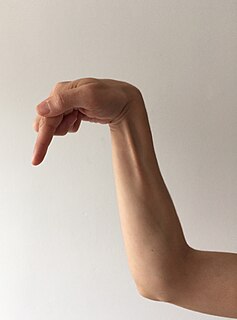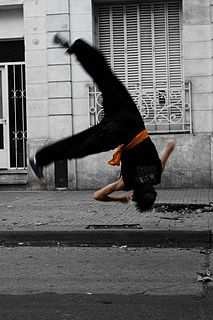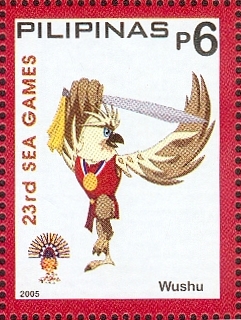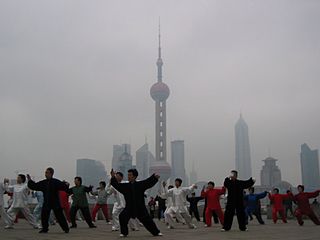Tán Tuǐ (traditional Chinese : 彈 腿 ; simplified Chinese : 弹 腿 ; pinyin :TánTuǐ) may refer to a particular style of Chinese Martial Arts (commonly called Kung Fu or Gung Fu (Chinese : 功 夫 ; pinyin :Gōng Fu), but more accurately called Wushu (traditional Chinese : 武 術 ; simplified Chinese : 武 术 ; pinyin :Wŭ shù) bearing the name Tantui, a form(s), set(s) or routine(s) - popularly known by the Japanese term Kata, but the Chinese term is (Chinese : 套 路 ; pinyin :Tào lù) Taolu - bearing this Tantui name in many different styles, or perhaps a specific type of front snap kick - also bearing the Tantui name.

Traditional Chinese characters are Chinese characters in any character set that does not contain newly created characters or character substitutions performed after 1946. They are most commonly the characters in the standardized character sets of Taiwan, of Hong Kong and Macau, and in the Kangxi Dictionary. The modern shapes of traditional Chinese characters first appeared with the emergence of the clerical script during the Han Dynasty, and have been more or less stable since the 5th century.

Simplified Chinese characters are standardized Chinese characters prescribed in the Table of General Standard Chinese Characters for use in mainland China. Along with traditional Chinese characters, they are one of the two standard character sets of the contemporary Chinese written language. The government of the People's Republic of China in mainland China has promoted them for use in printing since the 1950s and 1960s to encourage literacy. They are officially used in the People's Republic of China and Singapore.
Hanyu Pinyin, often abbreviated to pinyin, is the official romanization system for Standard Chinese in mainland China and to some extent in Taiwan. It is often used to teach Standard Mandarin Chinese, which is normally written using Chinese characters. The system includes four diacritics denoting tones. Pinyin without tone marks is used to spell Chinese names and words in languages written with the Latin alphabet, and also in certain computer input methods to enter Chinese characters.
As a form, routine or set, Tantui can be found in many Northern styles of Chinese martial arts. Its prevalence being so widespread, a common saying among Chinese martial artists has evolved: If your Tán Tuǐ is good, your kung fu will be good.
The term 'Tán Tuǐ' itself has been translated into English a variety of ways, with the most prevalent equating to "Springing Leg." Others are Pond Leg,Tam's (as in surname - used to represent name of a family style of Chinese Martial Arts) Kicks,Pond Kicks and others. The name has been translated several different ways, with the most prevalent being that of 'springing leg'. The term is made up of two Chinese words or characters. Everyone tends to agree on the second word or character: 腿. In standard Mandarin Chinese, this is represented by the Pinyin romanization as Tuǐ, and literally means leg, thigh, shank, etc.; a Google Image search for the Chinese character will reveal many images of legs, etc. However, in the world of martial arts, this has generally been accepted to mean 'kick,' or more specifically, a type of front snap kick.
Standard Chinese, also known as Modern Standard Mandarin, Standard Mandarin, Modern Standard Mandarin Chinese (MSMC), or simply Mandarin, is a standard variety of Chinese that is the sole official language of China, the de facto official language of Taiwan and also one of the four official languages of Singapore. Its pronunciation is based on the Beijing dialect, its vocabulary on the Mandarin dialects, and its grammar is based on written vernacular Chinese.

Romanization or romanisation, in linguistics, is the conversion of writing from a different writing system to the Roman (Latin) script, or a system for doing so. Methods of romanization include transliteration, for representing written text, and transcription, for representing the spoken word, and combinations of both. Transcription methods can be subdivided into phonemic transcription, which records the phonemes or units of semantic meaning in speech, and more strict phonetic transcription, which records speech sounds with precision.
The first Chinese character or word that makes up the term, however, is the one that tends to bring some confusion. The exact reasoning for the variations is unknown, however may be tied-in with the varying accounts of the form and / or style's origins and history.
Tán Tuǐ is deeply rooted in China's Hui ethnic group of people. [1]
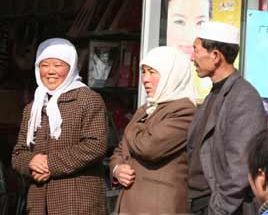
The Hui people are an East Asian ethnoreligious group predominantly composed of ethnically Sinitic adherents of the Muslim faith found throughout China, mainly in the northwestern provinces of the country and the Zhongyuan region. According to the 2011 census, China is home to approximately 10.5 million Hui people, the majority of whom are Chinese-speaking practitioners of Islam, though some may practise other religions. The 110,000 Dungan people of Kazakhstan and Kyrgyzstan are also considered part of the Hui ethnicity.

